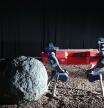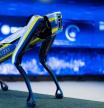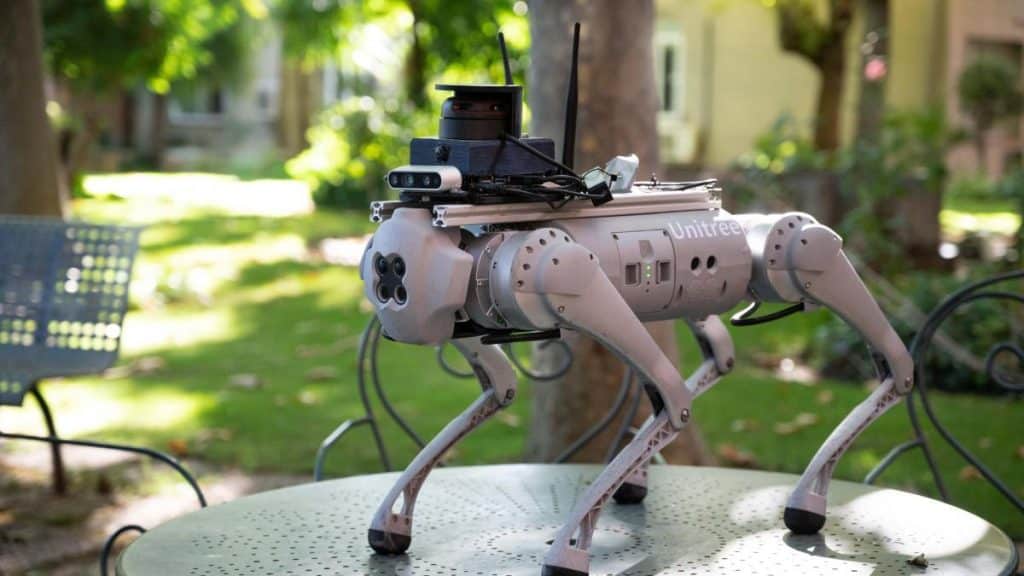Despite his metallic appearance and somewhat jerky movements, Tefi aspires to become a guide dog like any other. It is a robotic animal designed by a team of researchers from the Higher Council for Scientific Research (CSIC), who hope that this machine can help dependent or disabled people.
Skills are not lacking. Tefi is a robotic dog endowed with artificial intelligence. Among his multiple features, his ability to unequivocally distinguish between an object and a person stands out, thanks to its automatic learning system and the camera that he wears built into his head. In addition, he is connected to Google, which allows him to know information in real time. An advantage compared to their relatives in the animal world.
Robot
Tefi wants to become one more guide dog
The researchers imagined Tefi as any guide dog, capable of helping dependent or disabled people. That’s what they tried when designing it. Among its multiple features, it stands out its ability to distinguish between an object and a person, thanks to its automatic learning system and the camera located on the head.
Read also Raquel Sáez

By being connected to Google, you can find out information in real time, such as the traffic situation or the weather forecast, information that you can communicate aloud and that can be useful to its owner. In addition, this robotic dog has GPS for outdoor navigation, taking advantage of applications such as Google Maps. It also incorporates artificial vision algorithms that help your navigation and the identification of certain objects, such as traffic signs, traffic lights or people.
“In addition to notifying her owner of the time she has a medical appointment, Tefi is able to guide you directly to the office using only a floor plan that she can obtain if it is accessible. Thanks to its connection to the mobile telephone network, the robot can also request a taxi so that the patient does not have to worry about almost anything”, explains the doctor in Robotics Gerardo Portilla, in a video published by the CSIC.
The designers believe that this particular dog can be of great help when it comes to guiding the blind, but its creators also highlight its potential when it comes to assisting elderly people with dementia or Alzheimer’s patients.
Agility
Able to climb stairs or do a back somersault
Tefi owes its name to the initials of the CSIC institute where he was born: the Institute of Physical and Information Technologies (ITEFI), in Madrid. Despite his innovative features, his appearance is far from being any guide dog. It is a small metallic-looking device with some sudden movements, or less natural for those who think of an animal with these characteristics.
He is equally skilled. Tefi can climb stairs or do a backflip. “It is very robust and dynamic in rugged environments and much cheaper than a guide dog,” says Portilla. Until now, the researchers have carried out different navigation tests inside the institute and have verified that the robot is capable of guiding the user to different areas of the building with voice commands.
Read also Héctor Farrés

The robot designed by CSIC researchers is not the first dog with these characteristics. The American engineering and robotics company Boston Dynamics has been designing machines of this type for years. However, unlike Tefi, its use is industrial. “The application that this robot has is above all social, and that is what differentiates it from the Boston Dynamics dog,” adds Francisco Montero de Espinosa, a CSIC researcher at the same center.
Despite the differences, the scientists acknowledge that “obviously it will never replace an animal, which provides companionship and affection, but the range of possibilities and applications is quite wide.”
Now, they hope to soon start testing how Tefi navigates outdoors, where the environment is more dynamic. It is also planned that sensors will be installed so that it can detect warning signs, such as high blood pressure or the presence of volatile chemical agents in a home.


